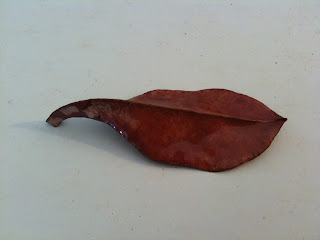Then folded it and annealed it several times.
You can see the front and the back of the various folds.
To get the flat disc into a bowl shape I forged it by dapping it in progressively deeper wooden dies.
I made a couple of bowls--one of which I enameled. First I did clear on both sides and then added blue to accent the folds. The final firing was done in the kiln and the higher heat brought out the gold in the copper, making for a great blue/gold contrast.
The back stayed a picker colour.















































